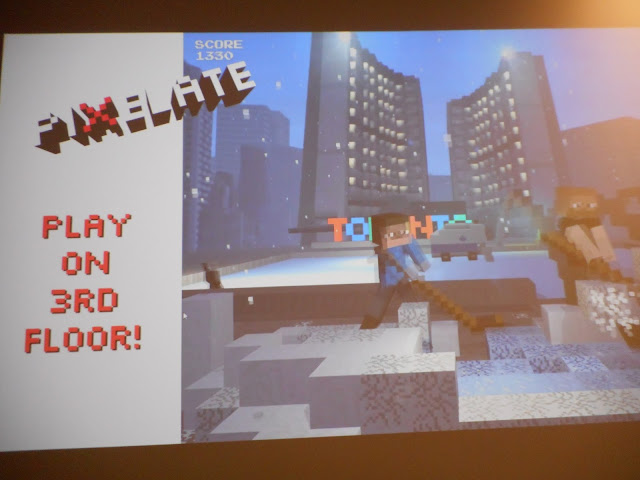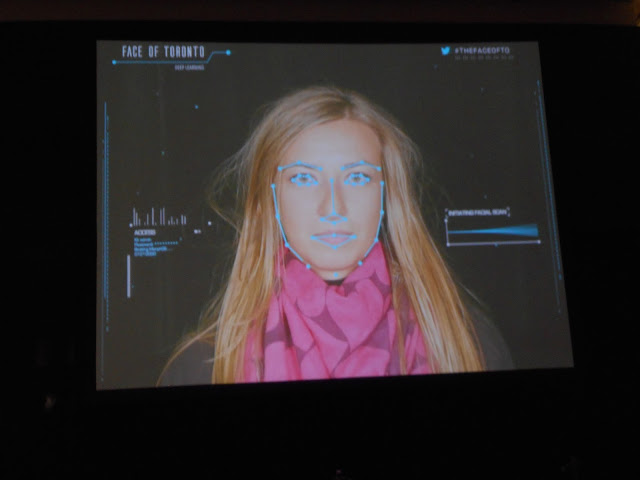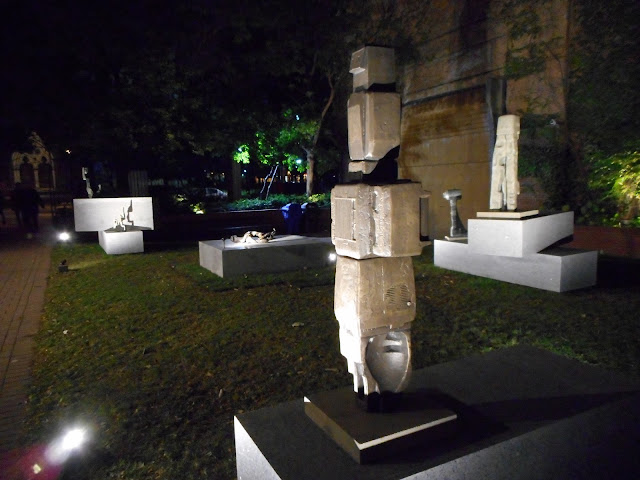During the first two weeks of December, I experienced a case of shingles.
When you hear about shingles, they're usually someplace on a person's torso, but the gods blessed me with a breakout on the left side of my face. Unlike what you hear, in my case, it wasn't painful - at least I was spared that - but it wasn't fun, and it sure wasn't pretty. I will treat you to some pictures of the progression later in this post; something to look forward to!
The Onset
Naturally, at first, I had no idea what was happening. The first symptoms began to show towards the last weeks of November; I felt aches and pains in the bones in the left side of my head, mostly around my jaw. My teeth in that area were quite sensitive, but I dismissed it as "cold weather" sensitivity. Later, I was to discover (thanks, internet!) that these were signs of neuralgia (literally "nerve pain"), a common symptom of the onset of the illness.
As you know if you've read this blog, I am a member of the Toronto Welsh Male Voice Choir, and on November 28, we held the first of three scheduled Christmas concerts. The concert went well, and I was planning to attend the customary choir afterglow at a local pub. On stepping outside after the show, though, I began to feel extremely tired. I was with another choir member, and we decided to get something to eat, then head home. I had also been noticing redness in the skin on the left side of my face, and asked if he noticed it. We both wondered what it could be - eczema, maybe? No, I had had a bad case of that as a child, and mostly remember the terrible itchiness that accompanied it, which, thankfully, wasn't happening here.
All the way home, I felt more and more fatigued, and was quite exhausted by the time I got in.
The next day, I noticed that the left side of my face was starting to swell up, and decided I'd better get to a doctor.
The First Week
Monday, I went to a local walk-in clinic, where the doctor looked at my face, and diagnosed me as having shingles. She assured me that it wasn't unusual for it not to be painful, so at least there was that. She prescribed two medications, Valacyclovir for the shingles, and Cephalexin, an antibiotic.
I was also sent to an ophthalmologist, since my left eye was quite red, and while I waited, I took the first dose of the medications (these were not cheap, by the way - the cost of both medications was nearly $200). The ophthalmologist found no issues with my vision, and off I went home
After I got home, it occurred to me that I should take a picture to document this experience (if anyone should doubt it), and did a bathroom selfie.
Just for contrast, here's a pic I had taken just a few days earlier and posted to Twitter to show my Movember 'stache, which I would shave off early, because my face was getting more and more swollen:
And, here I am on Monday afternoon:
Looking at this pic now, I can't believe I actually went out in public looking like that! Eurgh!
The doctor I saw at the walk-in clinic warned me that the symptoms could get worse before they got better, and boy, was that an understatement!
Shingles is essentially the chicken pox virus, lying dormant inside those who get chicken pox as a child, then showing up again as you get older. So, as with any virus, there are attendant symptoms such as fever, chills, weakness and fatigue. For most of Tuesday and Wednesday, I slept, either in my chair or in bed. I didn't have much of an appetite, either; I would take a few bites of something, and feel nauseous, then immediately flop down again, exhausted.
Also during this time, the area under my left eye got so badly swollen that it was easier just to close it and use my right eye if I wanted to see something.
As you see in the picture above, my upper left lip was also swollen up, and it got so bad that I couldn't open my mouth the whole way. Plus, the whole left jaw area eventually swelled up to near-tennis ball size. You can imagine how difficult this made eating and drinking, and as the week progressed, that area of my face became dry and encrusted, making things even harder.
All the quotidian things we take for granted had to be rethought. Shampooing in the shower wasn't possible, and I didn't dare shave my left upper lip for the whole two weeks; once the scabs receded, I had to keep the whiskers trimmed with scissors. Flossing? Forget it. Brushing? Just barely.
I didn't lose hope that the symptoms would go away soon, though. The choir had two more Xmas concerts to do, and I was determined to make the next one, the weekend of December 5. Unfortunately, the symptoms persisted, and - well, I was fooling myself, really; they weren't going anywhere, and neither was I.
As a precaution, on Monday, I had done some extra grocery shopping, and had enough to eat for that week, but by Saturday, I was running short. I was over the flu-like symptoms, and my appetite was returning, but now the outbreak on my face was starting to turn into reddish-black scabs, and I looked worse than ever! Fortunately, a very good friend, who lives nearby, was able to bring some groceries, and a box of surgical masks which I had requested, to my place on Saturday. I was over the contagious phase of the illness, so no issues with visitors, but as I mentioned, I looked like hell, and the masks would allow me to get outdoors without, at least, feeling too self-conscious. I made hot chocolate for my friend and I, and we had a nice chat.
I've been on my own for many years, and like to feel that I prefer it that way, but when you're completely alone like this, you realize how much you do miss other people. I sure was glad to have some company!
Well, by Sunday, I realized that I would need at least another week for things to clear up, and called work to say that I would need that much more time off.
The Second Week
On Monday, I went back to the walk-in clinic, just to see how things were progressing, from a professional's point of view. I felt better every day, though progress was slow, and was able to get out in public with a surgical mask on. The receptionist at the clinic (who must see sick people all the time) was quite shocked by my appearance, which made me glad I didn't try to go back to work, or to get out more than I did.
The doctor told me to finish off the antibiotic pills I had been prescribed the week before, and prescribed Bactroban, an antibiotic cream that I could apply to the scabs and surrounding areas, to ward off possible infections.
Here is what I looked like for that whole week:
 |
| You can understand why I wanted those surgical masks, right? |
I still had limited energy, and needed rest and recuperation more than anything. But my appetite was improving, and I could get the groceries I needed on my own now.
Early in the week, my regular GP's office called and suggested I make an appointment. The earliest they could take me was Friday (which was why I chose a walk-in clinic in the first place). By this time, a lot of the scabs had come off, though there were still plenty, and there was starting to be an itch on the clear areas. The doc prescribed a lotion to combat the itch, and suggested I put Vaseline on the scabs to soften them up and help them come off. This turned out to be the best suggestion of all, as that's just what was needed to clear things up over the next few days.
Sadly, I had to beg off the next (and final) Xmas concert that the choir was doing, that Saturday the 12th. I still didn't feel "presentable" enough, and was still easily tired.
I got a call from one of the guys that week, with a very generous offer of monetary assistance from some choir members for the time I had to take off work. I assured him that I have some savings that I could use to cover the lost wages, but was deeply moved by this gesture.
Also, I had rented an instrument from a music store to play for these concerts, and was unable to return it while I was ill. When I did get it back to them and explained my situation, they said they had already taken the next month's rent out of my credit card, but would refund the difference, in cash!
As I write this, I am still touched by the kindness and sympathy shown to me by friends and family, and strangers, during this difficult time.
Then, it was back to the ophthalmologist again, for follow-up. She found no problems with my vision, which made me feel more confident and happy than I had for a long time.
It's Not Over...
By the second weekend (12-13 December), all the scabs had come off my face, save for a small one near my eye, and I was able to go back to work on Tuesday. I put in full days the rest of the week, and was even able to enjoy the company Christmas party that Friday. Even between Tuesday and Friday, co-workers were remarking how much better I looked.
My appetite and energy increase every day, and I feel able to do all the things I used to, though I don't push myself. Happily, there are no vision or muscular problems as a result of this illness.
There is still a tiny bit of swelling and reddish skin on the left side of my face as of today, December 23. Part of my upper lip and some of my teeth on the left side are still numb, like a dentist's freezing. The downside is that the itching is more of a problem - actually, it's weird; the sensations range from itching to numbness to aches to tingling. It's sort of like when your leg falls asleep, and as the circulation comes back, you have these different sensations - only it's happening way more slowly than that.
I have trouble getting to sleep at nights, when there are no distractions, and my focus shifts to the itching in that area. I try to think of other things, and eventually do get to sleep, but it can be fitful. My eye is pretty much fully open, but still a little red, and alternates between being itchy and being sore. Thankfully, I still have lots of that lotion to relieve the itch, and am now reconciled to the fact that this is going to take its own time to fully heal.
Finally...
This was one of the loneliest periods of my life. I really appreciated the sympathy and encouragement from friends and family, but I felt so very isolated. I even felt despair at moments - which, thankfully, soon faded - that I hope I never feel again. I can't imagine how it must be for those with a chronic illness, or shut-ins, who truly can't get out, and may not see an end to their troubles.
Perhaps I, and anyone who reads this, can show a little more empathy towards people who are genuinely less fortunate, especially in this season.
And on that note, Merry Christmas - Feliz Navidad - Joyeux Noel - Buon Natale - Froehlich Weihnachten - to everyone. Thank you for reading this blog; I look forward to posting more in the new year.

















































